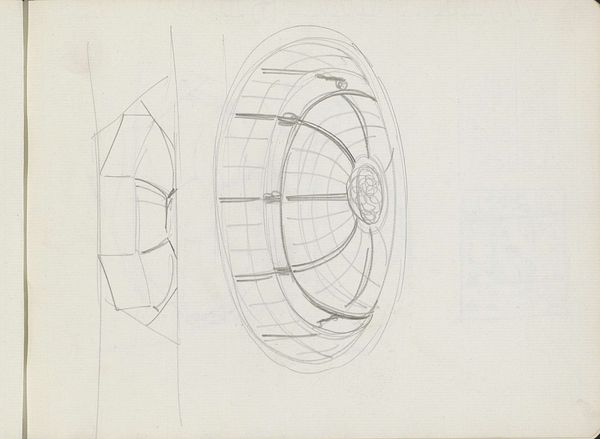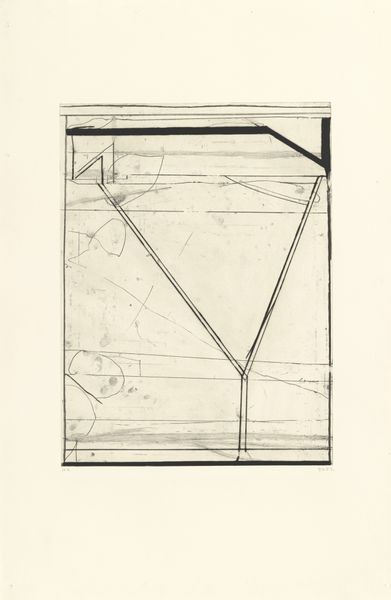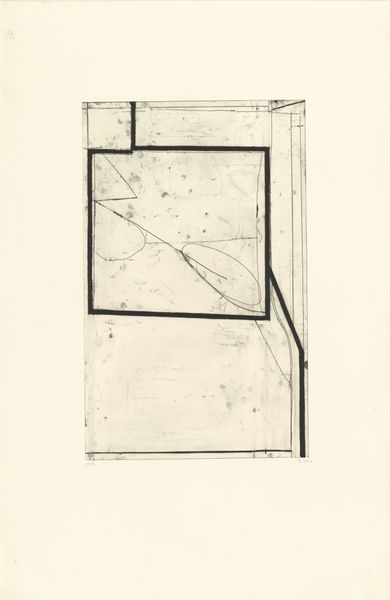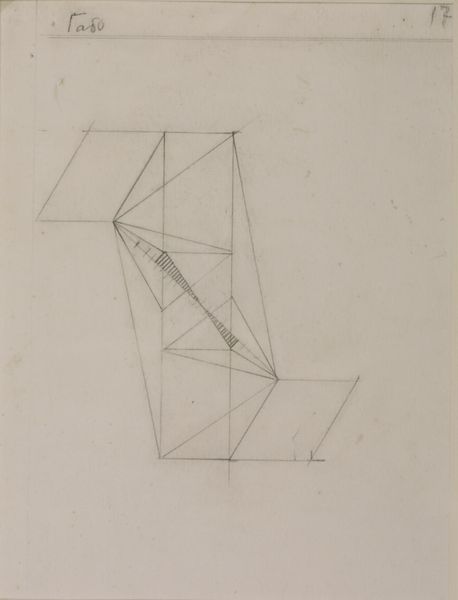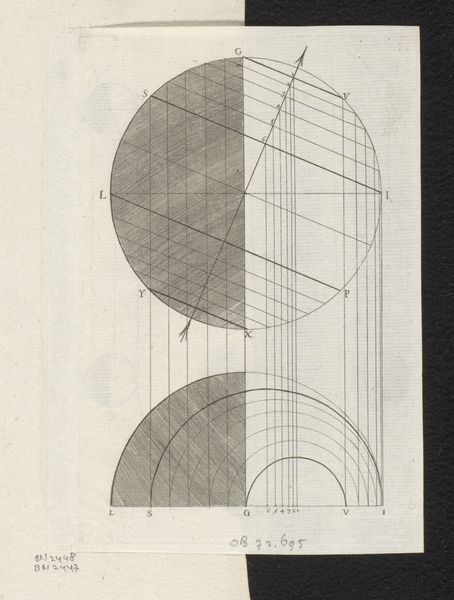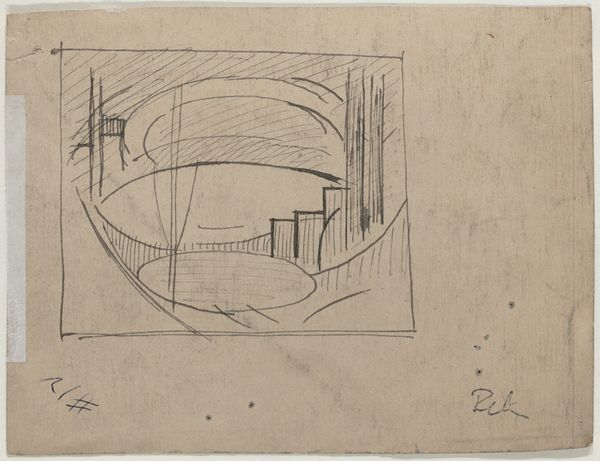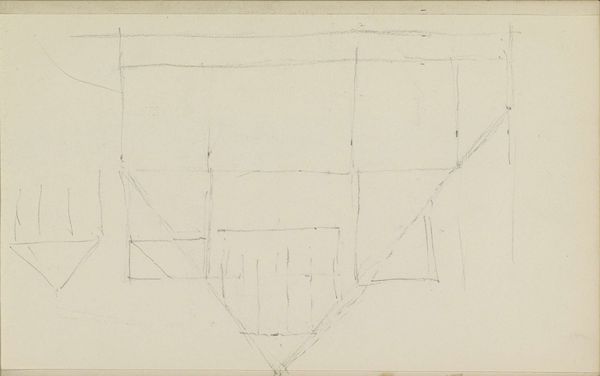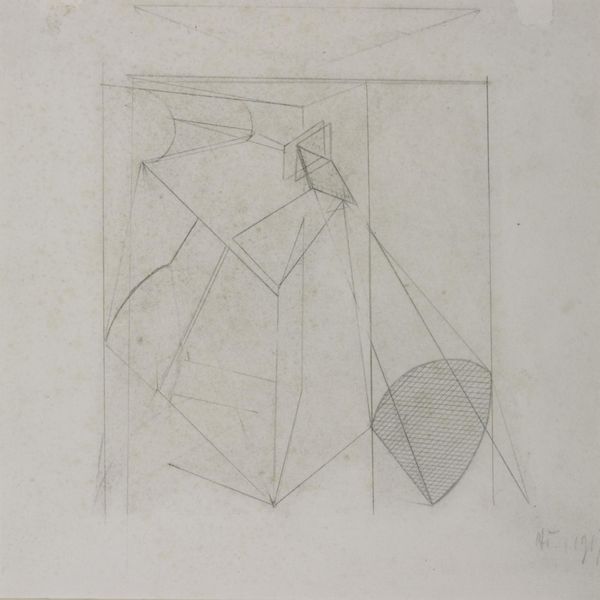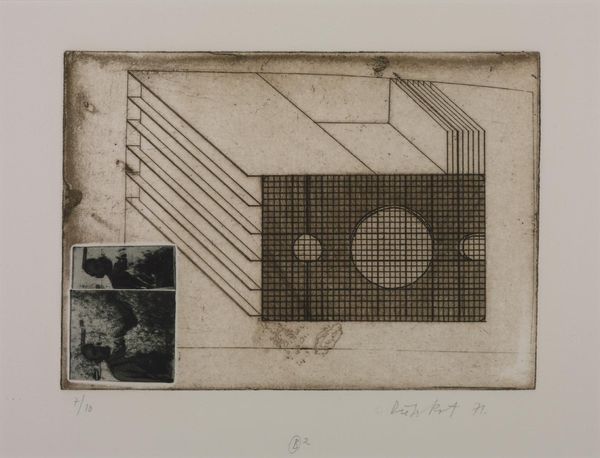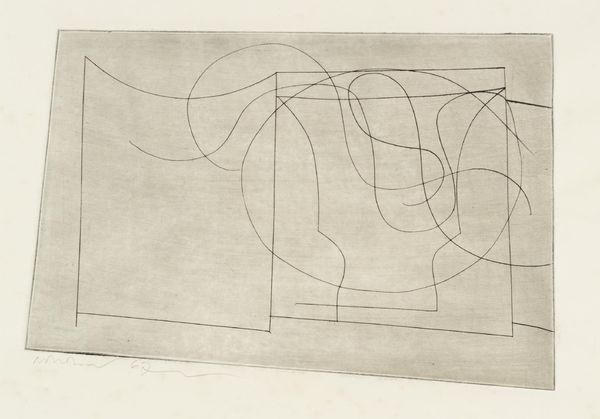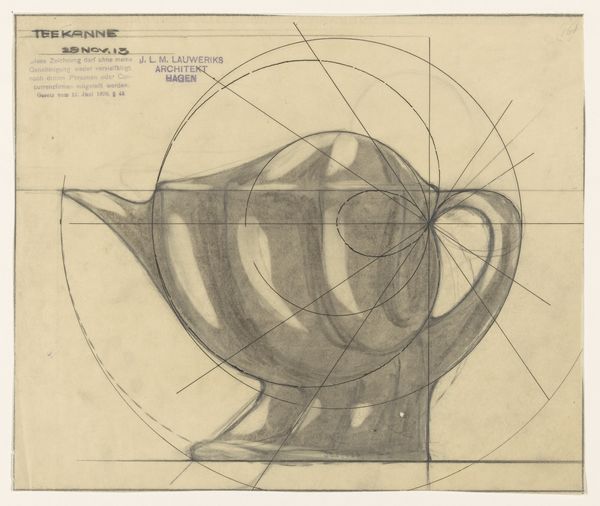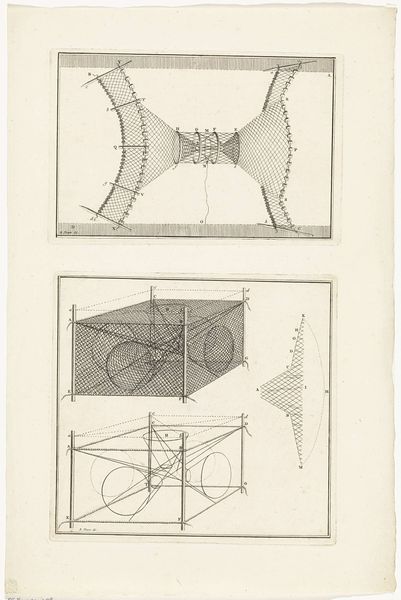
drawing, pencil
#
drawing
#
geometric
#
pencil
#
abstraction
Dimensions: overall: 101.8 x 77.3 cm (40 1/16 x 30 7/16 in.)
Copyright: National Gallery of Art: CC0 1.0
Editor: This drawing, titled "Proposal for General Mills Commission," was created by Jene Highstein in 1987 using pencil. It seems very architectural. What stands out to me is the combination of geometric shapes; a rectangular prism intersected by a rounded form. What do you see in this piece? Curator: It's fascinating to consider the formal interplay at work here. Notice how the pencil lines, through their varying densities and directions, suggest volume and depth despite remaining firmly on the two-dimensional plane. Highstein is exploring the tensions inherent in representing three-dimensional form through the flat medium of drawing. What compositional strategies do you observe Highstein employing to emphasize form? Editor: Well, the horizontal lines across the prism seem to reinforce the layered structure. And the measurements included give it a sense of specificity, but also retain a sense of abstraction...it's a plan, but for what? Curator: Precisely. Consider how Highstein deploys line and form to generate both a conceptual blueprint and a visually arresting composition. The contrast between the angular prism and the curving ellipse introduces a dynamic tension, forcing the eye to move around the composition. The medium, drawing, itself proposes possibilities. How does the piece use the medium to achieve its formal qualities? Editor: The visible construction lines suggest the artist's process, a layering and refining. It's not just a finished form, but a record of how it came to be. The lack of shading flattens certain areas, heightening the dimensional qualities of the form, if that makes sense? Curator: Yes, and this interplay speaks to the artwork’s essence. It is a testament to the reduction of forms to their primary, fundamental state. Looking closely, we observe that it possesses a remarkable capacity to create volume and depth in the viewer’s mind. Editor: I appreciate how a formalist reading emphasizes the power of simple forms and the artistic decisions that give them presence. It gives new importance to materiality. Curator: Indeed, understanding these compositional elements unlocks a deeper appreciation for the artist's formal and conceptual objectives.
Comments
No comments
Be the first to comment and join the conversation on the ultimate creative platform.
